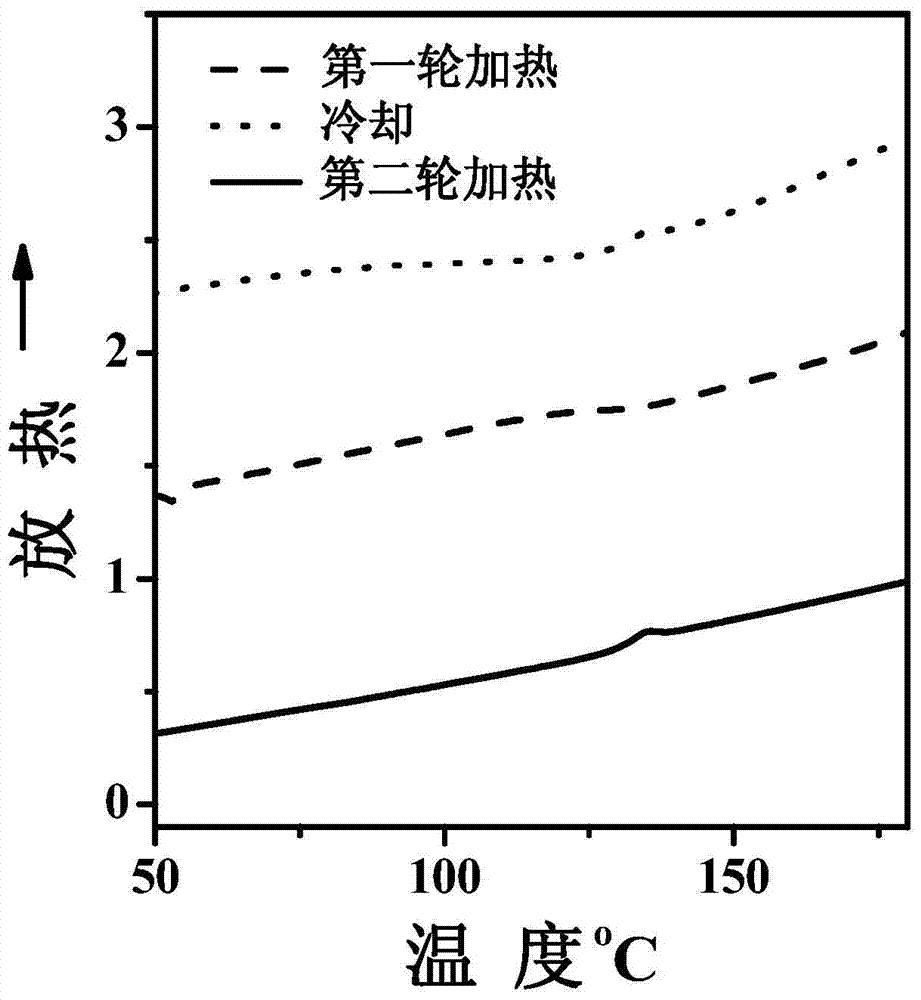Ionic cathode buffer layer molecular material and its preparation method and application
A cathode buffer layer, ion-type technology, applied in chemical instruments and methods, semiconductor/solid-state device manufacturing, electrical components, etc., can solve the problem of easy to be partially or completely washed off, limited application, and difficult to resist corrosion by weak polar solvents and other problems, to achieve good film shape stability, corrosion resistance, good alcohol solubility and solution processing performance
- Summary
- Abstract
- Description
- Claims
- Application Information
AI Technical Summary
Problems solved by technology
Method used
Image
Examples
Embodiment 1
[0050] The structural formula of the molecular material of the ionic cathode buffer layer in this embodiment is as follows:
[0051]
[0052] The preparation process of the molecular material of the ionic cathode buffer layer of this embodiment is as follows:
[0053] Step 1: Preparation of (2-bromo-6-naphthyl)diphenylphosphine (1)
[0054]
[0055] In N 2 Under the atmosphere, 2,6-dibromonaphthalene (3g, 10.5mmol) was dissolved in dry tetrahydrofuran (200mL) and cooled to -78°C. Add n-butyllithium (2.4M solution in hexane, 4.8 mL, 11.55 mmol) dropwise via a syringe. In N 2 Stir at this temperature for 40 minutes under the atmosphere, and then add diphenylphosphine chloride (2.3 mL, 12.6 mmol) via a syringe. The mixture slowly returns to room temperature, at N 2 Continue stirring overnight under the atmosphere. After the reaction is over, a small amount of ethanol is added to terminate the reaction, and after tetrahydrofuran is removed by distillation under reduced pressure, it is...
Embodiment 2
[0072] The structural formula of the molecular material of the ionic cathode buffer layer in this embodiment is as follows:
[0073]
[0074] The preparation process of the molecular material of the ionic cathode buffer layer of this embodiment is as follows:
[0075] Step 1: Preparation of (2-bromo-6-naphthyl)diphenylphosphine (1)
[0076]
[0077] In N 2 Under the atmosphere, 2,6-dibromonaphthalene (3g, 10.5mmol) was dissolved in dry tetrahydrofuran (200mL) and cooled to -78°C. Add n-butyllithium (2.4M solution in hexane, 4.8 mL, 11.55 mmol) dropwise through a syringe. In N 2 Stir at this temperature for 40 minutes under the atmosphere, and then add diphenylphosphine chloride (2.3 mL, 12.6 mmol) via a syringe. The mixture slowly returned to room temperature, at N 2 Continue stirring overnight under the atmosphere. After the reaction is over, a small amount of ethanol is added to terminate the reaction, and after tetrahydrofuran is removed by vacuum distillation, it is dissolved ...
PUM
| Property | Measurement | Unit |
|---|---|---|
| energy conversion efficiency | aaaaa | aaaaa |
Abstract
Description
Claims
Application Information
 Login to View More
Login to View More - R&D
- Intellectual Property
- Life Sciences
- Materials
- Tech Scout
- Unparalleled Data Quality
- Higher Quality Content
- 60% Fewer Hallucinations
Browse by: Latest US Patents, China's latest patents, Technical Efficacy Thesaurus, Application Domain, Technology Topic, Popular Technical Reports.
© 2025 PatSnap. All rights reserved.Legal|Privacy policy|Modern Slavery Act Transparency Statement|Sitemap|About US| Contact US: help@patsnap.com



